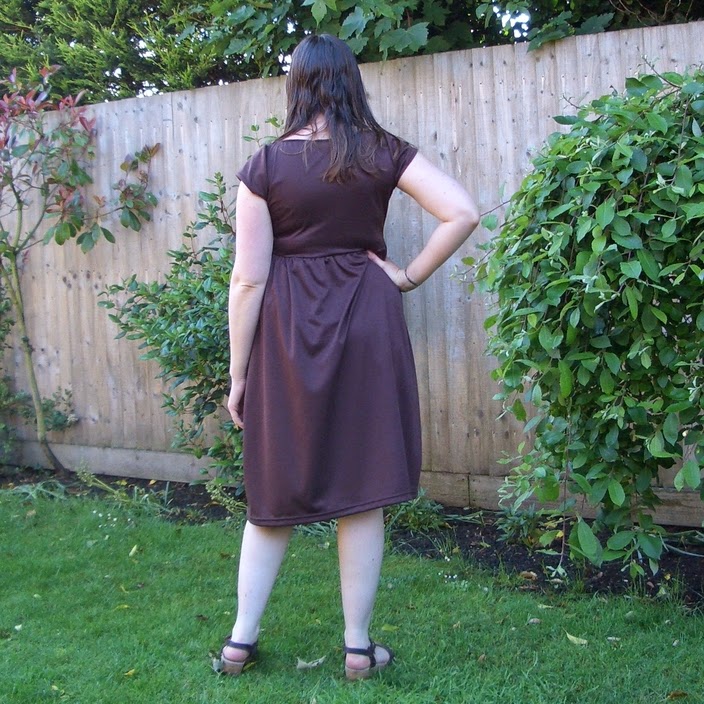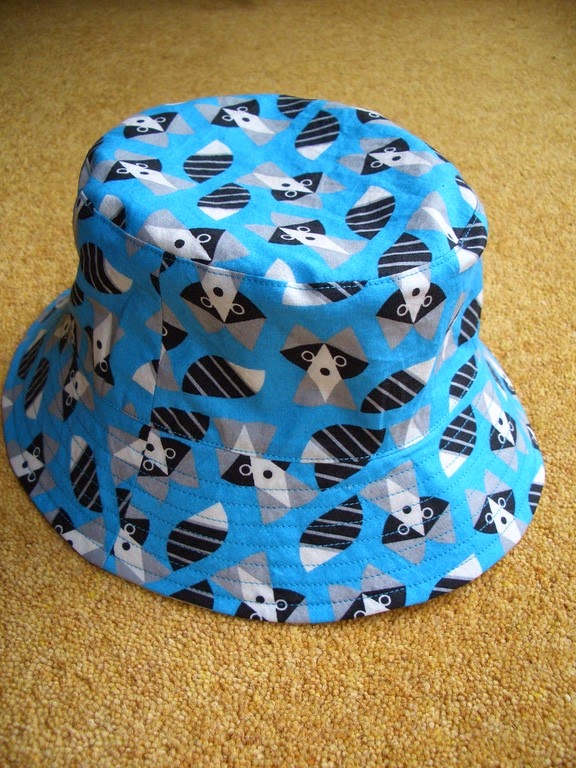Ruffles remind me of bad 80s wedding dresses. Especially the kind of ruffles that are gathered where they attach to the seam: eugh. They stick out all stiff and bulky. I do not like this kind of ruffle.
I do like the sort of ruffle that attaches to the seam smoothly, but then flares out along the loose edge. That feels a bit less granny and a bit more modern. These ruffles cascade beautifully, instead of sticking out nastily. See the neckline of
this pretty dress by Kathleen at Grosgrain Fabulous:
How to make such elegant ruffles? We can deploy the magic of maths*!
For the ruffles to fall as they do, the outer (free) edge must be longer than the inner edge (attached to the garment). Cutting a strip of fabric on a curve gives you an outer edge longer than the inner edge, so Bob is your uncle (or in my case, my mother's aunt).
For extreme ruffles like the above dress, it turns out that the outer edge of the ruffle must be about 5 times longer than the inner edge (go on, measure it on your screen with string!). The curve to do this will be so extreme that each end of the strip will meet, i.e. you'll cut out a circle with a hole in it. Actually, whatever length of ruffle you need, it's easier to calculate as a section of a circle. I like to calculate what I need to make, rather than trial-and-error cutting. Fabric is expensive but a little time spent in thought before you cut is free.
First, decide on the width of your ruffle, we'll call it "W". I want my ruffles to lie on my shoulders like the dress pictured above, so I'm going for a width of W = 8cm.
Next, decide on how much longer you want the outer edge to be compared to the inner edge, call this "X". For extreme ruffles, I like X = 5, which means your outer edge is 5 times longer than your inner edge. Lower values of X will give smaller ruffles, while bigger values will ramp up the ruffle mania.
Now imagine drawing two concentric circles (a.k.a. a picture of a doughnut). The inner circle will become the edge you attach your ruffle on, while the outer circle defines the edge that waves free in the breeze. Okay, you need to slice through your doughnut at the end to get your curvy strip, but that's fine.
 |
| Your generic ruffle pattern. You're welcome. |
The inner circle has a circumference of C = 2 x pi x r, where r is the radius of the doughnut hole. We'll work out what C and r are going to be in a minute. The outer circle has a circumference X times larger, because that's the type of ruffle we've chosen. So, it'll be "X x C". The radius needs to be r+W, so that when we cut our doughnut open, we have a curvy strip of width W. So, the equation for this is (X x C) = 2 x pi x (r+W).
Like me, you were probably forced** to take a GCSE (or equivalent) in mathematics, so you can solve your two simultaneous equations for r:
C = 2 x pi x r
X x C = 2 x pi x (r + W)
Full marks if you got the solution r = W / (X-1).
For my happy case of X = 5 and W = 8cm, you get r = 2cm. So, you draw a doughnut with the hole having radius r = 2cm and the outer edge having radius r + W = 10 cm. Easy! (Don't forget to add seam allowances, and finally cut though that circle to get your strip in the manner suggested on the diagram.)
How much ruffle does one circle buy you? For this you'll be wanting the circumference of the inner circle, which is the edge you'll use to attach your ruffle. That'll be 2 x pi x r, which is about 6 x r. For me, that worked out at just over 12cm. To get a longer bit of ruffle, you'll have to cut out many circles and join the strips together along the straight-cut edges in a tedious manner.
At the end of your ruffle, cut the edge into a pretty curve (see dashed line).
Hemming your ruffles is a pest because of the curve. You can use a rolled hem on an overlocker in matching (or contrast) thread for minimum hassle, but you have to be okay with that look. Otherwise, enjoy your painful rolled-hemming!
* I am prepared for more ridicule by posting this. It's not as bad as the peg bag tutorial though.
** mandatory but it was a pleasure! ;-)





















































